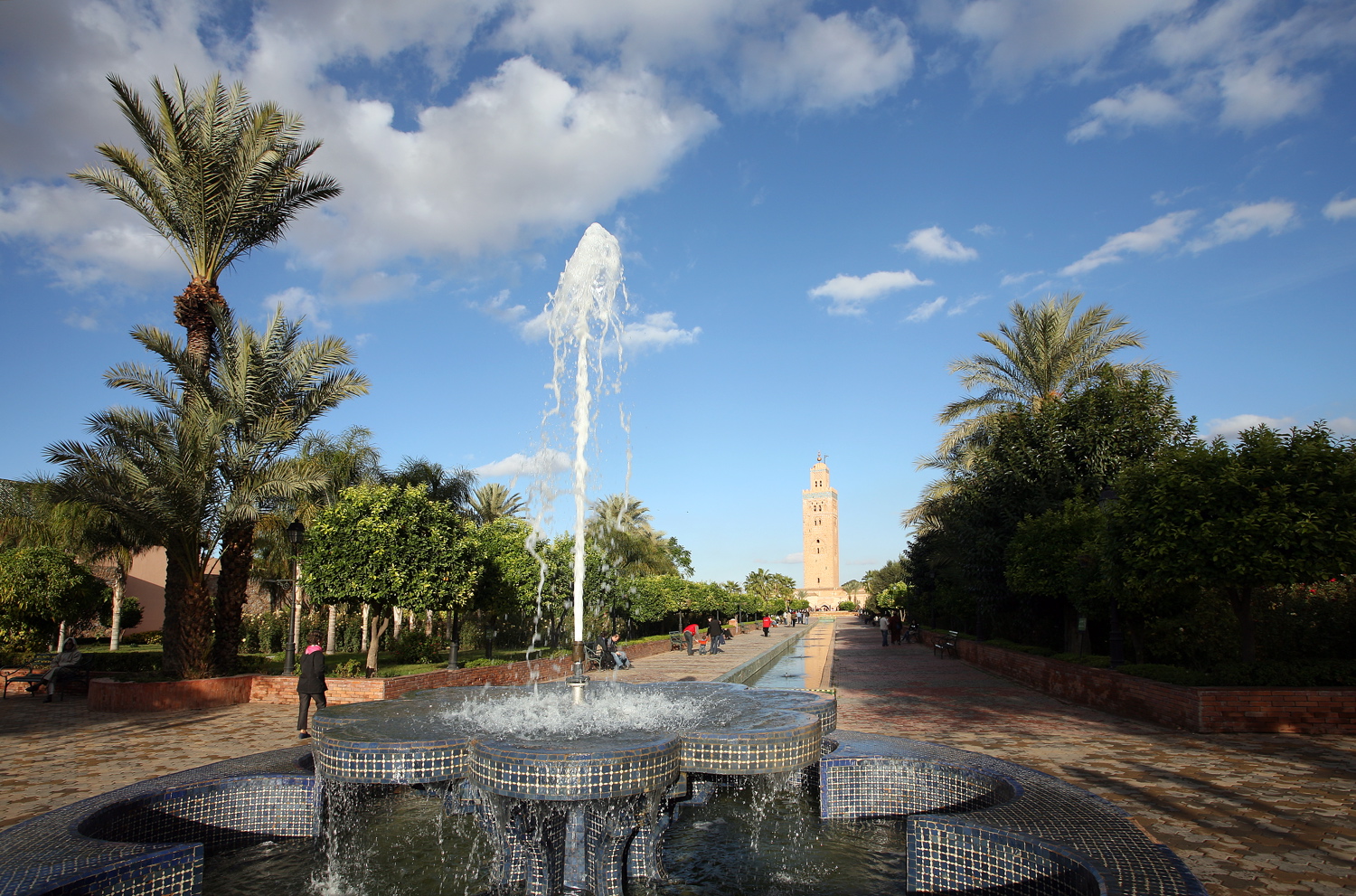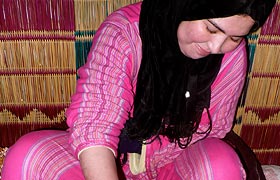The city of Marrakech is normally associated with bartering for sparkly slippers and ceramics in the world famous souk; clamouring across the road, life and Moroccan rug in-hand, dodging death-wish scooters and supping mint tea whilst reclining, a la Talitha Getty, on a leather pouffe.
But these clichés, as I discovered on my trip hosted by
Angsana Riad Collection, although true, aren’t, as they say, the half of it.
Marrakech is a city of stark contrasts and contradictions, as in-your-face as the insistent male street sellers, and as striking and ambitious as the fastidiously neat little girls on their way to school.
And the fourth Marrakech Biennale is the perfect embodiment of all these elements. Last Wednesday, at the Riad El Fenn, Vanessa Branson ( Richard’s sister) launched the event to a packed crowd of press and artists. Running on ‘ Moroccan Time’ ( ie late ) she passionately explained why she started the festival, which has attracted the likes of Zadie Smith and Kim Cattrall.
“There was a terrible miscommunication about the Islamic world, and I wanted to do something about it,” she said. “ I had always had a wonderful experience, what they were saying wasn’t my experience. I wanted to create a platform for Morroccan artists and artisans, not just introducing Western art to Morocco.”
So Vanessa and her small team of curators put together a biennale, crossing over and blending many disciplines – visual art, literature, film and architecture. The biennale, consisting of talks, debates and film ran for five days whilst the main exhibition, Higher Atlas, with its main site at the city’s Theatre Royal is on until June. It’s generated quite a buzz, with its young curators Nadim Samman and Carson Chan bringing together a host of young contemporary artists, and much of the work specially commissioned and site specific. Rather like the city of Marrakech itself, it’s a mash-up of genres, of old and new, traditional and modern.
It was the first major trilingual ( Arabic, French and English ) contemporary arts festival in North Africa, and the interest it generated is testament to our increasing appetite for a new aesthetic, and our interest in discovering the truth behind different cultures.
Branson, Samman and Chan were at pains to explain how accessible the exhibition is to local Moroccans, how they’ve engaged with local artisans and students and, crucially, how the biennale integrates with the physical, the bricks and mortar, of the city itself. That said, it seemed that the only Moroccans at the biennale were the rich, liberal elite.
To be fair, advertising inside the Medina is prohibited, and cultural funding and structures aren’t in place ( there aren’t any art schools in Marrakech - those with an artistic bent are steered towards graphic design because, with 48% unemployment to tackle, that’ll give them paying job at the end of their studies.)
However, the sentiment, will and ambition of this event will hopefully engage with a wider local audience and help promote North African artists and the city itself to the wider world.
“ It’s an art exhibition that you cannot photograph, “ said Chan, by way of explaining that the works should be experienced, not read about in a brochure.
With over 30 artists participating in Higher Atlas, 90% of whom are Moroccan, a spanking new Ecole Supérieure des Arts Visuels ( where one of the exhibitions, Geometry and Speculation was held ) a modern King, who gave the biennale his patronage, Branson’s ambition to promote Marrakech as a cultural hub looks set to be realised. I certainly came away with the feeling that, despite the backdrop of the Arab Spring, this is a city on the up.











